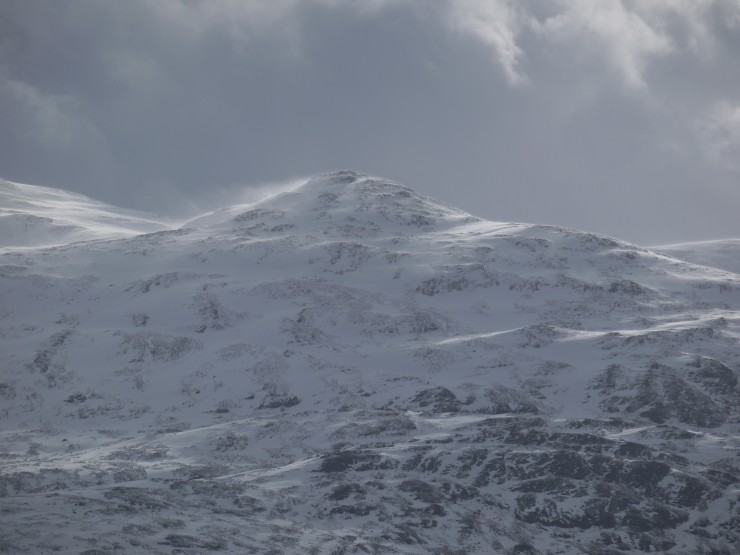Friday’s avalanche
27th February 2015
Avalanche slid at 11am this morning after overnight snowfall and drifting. The bedsurface was a thin melt-freeze crust (from the recent meltdown probably) with the failure layer being soft overlying broken (windblown) crystals. Note the surface roller ball activity to the right of the crownwall & running out further than the avalanche debris. Freezing level rose to around 750m and initiated this surface activity as well as the partial cornice collapse. The cornice line is still quite big though doesn’t show up well in the photo above…
Drifting all day at higher altitudes. See above and below. The weather was overcast for almost the entire day with just the occasional cloudbreak. Got very lucky with the first photo!
Comments on this post
Got something to say? Leave a comment








Grant Duff
27th February 2015 7:19 pm
Creag Pitridh aint got many fans but when approached from the north its a joy.
Paul Pitcher
2nd March 2015 12:07 pm
Interesting roller ball activity – what is this indicative of? Are these point-release sluffs? I’ve never heard the term “roller-ball” before.
meagaidhadmin
2nd March 2015 2:54 pm
Thanks for your comment and interest, Paul.
Good questions.
‘Roller ball’ activity is slightly different from more widely known and recognised ‘point release’ loose snow avalanches. Both come about because relatively low density surface snow loses cohesion and descends down slope either as discreet ‘roller balls’, or as coalesced roller balls creating definite though shallow sidewalls in the shape of an uphill pointing elongated triangle. The breakdown in cohesion comes about because the air temperature goes above 0 degrees C., and generally speaking the higher the temperature goes the greater the frequency/size of roller ball activity, eventually coalescing into point releases or wet sluffs. In Scotland, we often see wet point releases emanating from rocks or boulders sticking out the snow and this is because these are very effective points of heat transfer to the snow in their immediate vicinity. Angle of repose will also have a role to play in both types of wet release – the steeper the slope the more likely the occurrence of roller balls coalescing into more well-defined point releases or loose snow avalanches.
Dry point releases are also possible but the snow needs to be very low density indeed and the temperatures very cold. Dry point releases tend to happen immediately after snowfall or light drifting.
What do roller ball/point releases/wet sluff/loose snow avalanches tell us about stability?
If snow is loosing cohesion then stability is declining in that location and may be indicative of a much more serious trend. If temperatures continue to rise then these rollers balls are acting as sentinels, warning of impending further hazard and bigger avalanches. Also bear in mind that on a steep slope even a relatively minor wet sluff can generate enough energy to knock you off your balance and send you on a tumble downhill through rocks/boulders, over crags etc.. One of the authors of ‘A Chance in a Million?’ was ‘avalanched’ in such a way in Coire an t-Sneachda back in the 1980s and suffered multiple breakages of bones in his leg and hip. The size of the ‘avalanche’ was out of all proportion to its consequences.